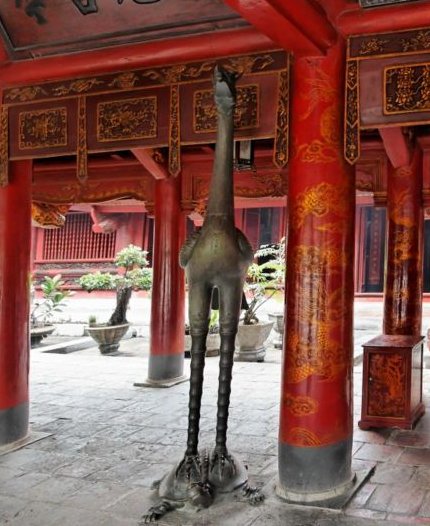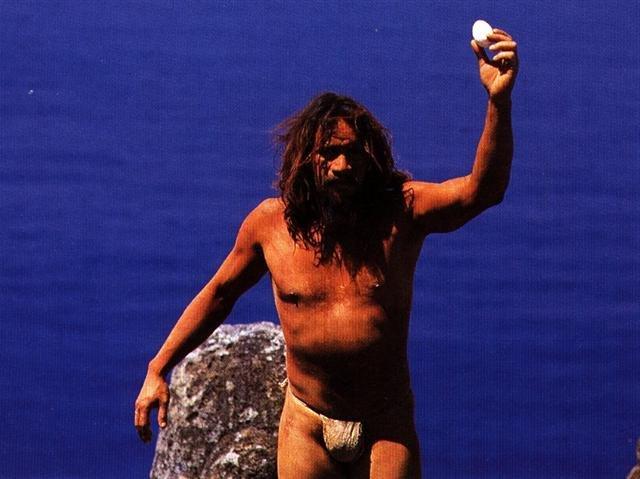13-9. We should then add the star positions of the Sun
as deduced by the nakshatra
method:
 |
 |
|
Eb4-26 |
Eb4-27 → 7 *
42 = 294 |
|
te maro - te vai - te
tagata |
te henua te kiore |
|
VISIBLE CLOSE TO
THE FULL MOON: |
|
TSEEN KE (Heaven's Record) =
φ
Velorum
(149.9) |
ν Leonis (150.1), π Leonis (150.6) |
|
Aug 17 (229) |
18 |
|
"July 7 (188) |
8 |
|
JUNE 14 (165) |
15 |
|
THE SUN: |
|
No star listed (332) |
η Piscis Austrini (333.4)
*292.0 = *333.4 - *41.4 |

 |
 |
 |
 |
|
Eb4-28
→ 2 * 2-14 |
Eb4-29 |
Eb4-30 |
Eb4-31
(326 + 138 = 464) |
|
ku hakapau hia |
te henua |
te henua |
kiore - henua |
|
Pau.
1. To run out (food, water): ekó pau
te kai, te vai, is said when there is an
abundance of food or water, and there is no
fear of running out. Puna pau, a
small natural well near the quarry where the
'hats' (pukao) were made; it was so
called because only a little water could be
drawn from it every day and it ran dry very
soon. 2. Va'e pau, clubfoot.
Paupau: Curved. Vanaga. 1. Hakapau,
to pierce (cf. takapau, to thrust
into). Pau.: pau, a cut, a wound,
bruised, black and blue. 2. Resin. Mq.:
epau, resin. Ta.: tepau, gum,
pitch, resin. (Paupau) Hakapaupau,
grimace, ironry, to grin. 3. Paura
(powder), gunpowder. 4. Pau.: paupau,
breathless. Ta.: paupau, id. 5. Ta.:
pau, consumed, expended. Sa.: pau,
to come to an end. Ma.: pau,
finished. 6. Ta.: pau, to wet one
another. Mq.: pau, to moisten.
Churchill. Paua
or pāua
is the Māori name given to three
species of large edible sea snails, marine
gastropod molluscs which belong to the
family Haliotidae (genus Haliotis),
known in the USA as abalone, and in the UK
as ormer shells ... Wikipedia
Probably the creator of the E text stated that
here 'Earth' would separate into a pair (above and
below) - because now (i.e. 8 days after the Head of
the Lion) the Full Moon should be at the right
ascension line of the Little King:
 
 |
|
VISIBLE CLOSE TO
THE FULL MOON: |
|
υ² Hydrae (151.8) |
Al Jabhah-8 (Forehead)
/
Maghā-10 (Bountiful)
/
Sharru-14 (King)
10h (152.2)
AL JABHAH =
η
Leonis (152.4),
REGULUS
(Little KIng)
=
α
Leonis
(152.7)
*111.0 = *152.4 - *41.4 |
λ Hydrae (153.2) |
ADHAFERA
= ζ Leonis,
TANIA BOREALIS (Northern Gazelle) = λ Ursae
Majoris,
SIMIRAM = ω Carinae
(154.7) |
|
Aug 20 |
21 |
22 |
23 |
|
"July 9
(*110) |
10 |
11 |
12 (193) |
|
JUNE 16 |
17 (168)
→
42 * 4 |
18 |
19 |
|
THE SUN: |
|
Rooftop-12 (Swallow)
22h (334.8)
KAE UH (Roof) = ο Aquarii
(334.0),
AL KURHAH (White Spot) = ξ Cephei (334.4),
SADALMELIK
(Lucky King) = α Aquarii,
AL DHANAB (The Tail) = λ Gruis
(334.6), ι Aquarii, ν Pegasi (334.7)
*293.0 = *334.4 - *41.4 |
ι
Pegasi (335.0),
ALNAIR (The Bright One) =
α
Gruis
(335.1),
μ
Piscis Austrini,
υ
Piscis Austrini (335.3),
WOO (Pestle) =
π
Pegasi
(335.7),
BAHAM =
θ
Pegasi (Good Luck of the Two Beasts),
τ
Piscis Austrini (335.8) |
ζ
Cephei (336.2),
λ
Cephei (336.3), -/270 Lac.
(336.7), λ Piscis Austrini (336.8) |
μ
Gruis (337.0),
ε
Cephei (337.2), 1/325 Lac. (337.3),
ANCHA (Hip) =
θ
Aquarii
(337.4),
ψ
Oct.
(337.5), α Tucanae (337.9)
*296.0 = *337.4 - *41.4 |
|
... Horapollo, the grammarian of Alexandria,
about A.D. 400, tells us that the crane was
the symbol of a star-observer in Egypt ...
 |
|
... It must be admitted, however, that the
task of raising the sky was not always a
long and arduous one. In the New Hebrides of
Melanesia the sky was formerly so low
overhead that a woman who was pounding roots
in a mortar happened to strike the sky with
her pestle. Greatly annoyed at the
interruption she looked up and cried
angrily, 'Go on up higher!' Whereat the sky
meekly obeyed her. What actually happened
probably was that the woman struck the low
house roof with her pestle and cried angrily
to her husband, 'If you don't raise that
roof higher, I won't cook you another meal!'
thus giving a strong impuls to the
development of the science of architecture
... |
 |
Then we should continue onwards by beginning to document the
remainder of line Eb4, viz. 14 - 3 = 11 glyphs:
 |
 |
 |
 |
 |
 |
|
Eb4-32 (465) |
Eb4-33 |
Eb4-34 |
Eb4-35 |
Eb4-36 |
Eb4-37 (12 * 12) |
|
manu hiri ki te ariki |
e ariki |
manu rere |
tapamea |
ka hokohuki - ma tere o te kahi |
te matakao - e ua |
|
Hiri 1. To braid, plait,
tress (hair, threads). 2. To rise in
coils (of smoke). 3. To hover (of
birds). Vanaga. 1. To elevate, to
mount. Hiriga, to elevate;
elevation, mounted, ascension,
assumption, declivity; hiriga
mouga, hillside. Hirihiri,
a swing, seesaw. P. Pau.: iri,
to be put up in a place, to lodge.
Mgv.: iri, placed in a higher
position than the observer, as a box
on a high shelf. Ta.: iri, to
lodge or stick up in a place. The
germ signification is 'above,
higher'. In Samoa it is used most
commonly in a tropical sense, but
the primal sense is sufficiently
retained in the signification to
lodge, to stick in, to show general
concord with Rapanui and particular
harmony with the other languages of
Southeast Polynesia. 2. To make a
bag; taura hiri, to make a
cord; rauoho hiri, plaited
hair; hirihiri, frizzed;
rauoho hirihiri, lock of hair. P
Mgv.: hiri, wo weave, to
plait; akahiri, to make a
mat. Mq.: hii, large plait of
coconut fiber. Ta.: firi, to
plait, to braid. When we interpret
in the sense of local conditions
Père Roussel's definition 'to make a
bag' the concord is perfect, for
bags are woven. The germ sense is
plainly the act of twining in and
out, over and under, which, with
specific differences due to manner
and material, may result in plaiting
or weaving; see hiro. 3. To go, to
walk, to voyage, to arrive, to
appear; hiri tê reka, to go
without noise; hiri koroiti,
to go softly; hiri tahaga no mai,
to go without a halt. Hiriga,
voyage, journey; hiriga hakapa,
to go by twos; hiriga hipa,
to go obliquely; hiriga kokekoke,
to go by sudden steps; hiriga
okorua, to go by twos; hiriga
tahataha to go across; hiriga
tekiteki, to go on hopping;
hiriga tê mataku, to go on
fearlessly; hiriga totoro, to
go on all fours; hiriga varikapau;
to go in a ring; hiriga veveveve,
to go boldly. Churchill. Pau.:
Hirinaki. 1. To incline, to
slope. Ta.: hirinai, to rest
upon. Ma.: irinaki, to rest
upon. 2. To be apprehensive. Ta.:
hirinai, to apprehend.
Churchill. Mgv.: Aka-hiria,
to enquire after. Sa.: sili,
to ask, to demand. Hirihiri,
to fish for turtle. Mq.: fiifiii,
a small net for taking turtle.
Churchill.
Matakao. Oar,
paddle; clitoris. Churchill. |
|
Aug 24 (236) |
25 |
26 |
27 |
28 |
29 |
 |
 |
|
Eb4-38 |
Eb4-39 |
|
erua age rae |
|
Aug 30 |
31 |
 |
 |
 |
 |
 |
 |
|
Eb4-40 |
Eb4-41 |
Eb4-42 |
Eb5-1 (326 + 150) |
Eb5-2 (477) |
Eb5-3 (152) |
|
manu i ruga o te take |
manu rere |
E manu |
i te tino |
ku tere mai |
henua - kiore |
|
Take.
The Marquesans are the
only people who own to a distinctive
national name, and retain a
tradition of the road they travelled
from their original habitat, until
they arrived at the Marquesan
Islands. They call themselves te
Take, 'the Take nation'.
Fornander. Take, Tuvaluan for
the Black Noddy (Anous Minutes).
The specific epithet taketake
is Māori for long established,
ancient, or original. In the Rapa
Nui mythology, the deity
Make-make was the chief god of
the birdman cult, the other three
gods associated with it being
Hawa-tuu-take-take (the Chief of
the eggs) his wife Vie Hoa
and Vie Kanatea. Wikipedia. |
|
Sept 1 (244) |
2 |
3 |
4 |
5 |
6 |

|